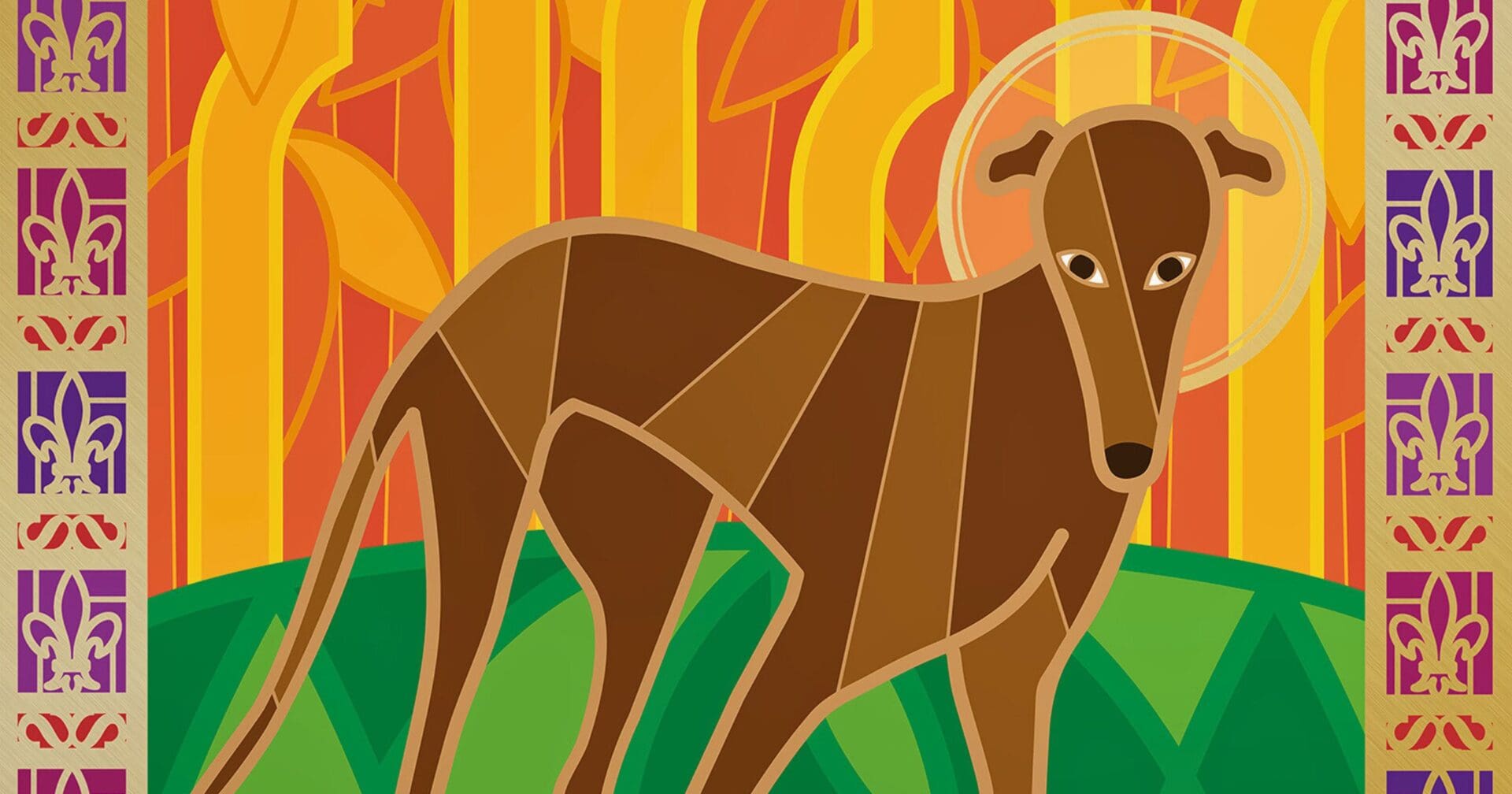As Catholics, we venerate saints to show the proper reverence and respect for the pious lives they led. Typically, candidates for sainthood go through a rigid canonization process in the Church before they are formally recognized. However, for over 700 years the residents of Lyon, France prayed to a locally venerated saint. They prayed for his intercession to help stave off sickness and to protect their infants from danger, even building a shrine upon his grave. This is par for the course for Catholics, except this was no regular saint, this “saint” was a dog.
According to the legend, Saint Guinefort was a greyhound owned by a wealthy knight living in a castle in Lyon. One day, the knight ventured beyond the walls to go hunting, leaving his infant child in the care of his loyal companion. Upon returning from a successful hunt, he went to the nursery and discovered a scene of utter chaos. The child was nowhere to be found, the crib overturned, and Guinefort was covered in blood.
The knight thought that Guinefort killed his child and drew his sword, quickly striking the animal down. His son suddenly cried out from underneath the crib and was found completely unharmed next to the bloody remains of a venomous snake. Realizing that Guinefort saved the infants life and he killed him under false pretenses, the knight decided to honor him. He dropped him into a well, filled it in with stones, and planted trees around it making a shrine.
The story of Guinefort’s bravery spread quickly throughout the city, and soon enough he became recognized by the locals as a patron saint for infants. They would travel to his shrine and bring their children to be healed of ailments, leaving them overnight to be healed by the canine.
For a hundred years, the locals continued to pray for his intercession and bring their children to be healed. The legend spread to Etienne of Bourbon, a Dominican Inquisitor noted for being a historian of medieval heresies. He came to Lyons and declared the veneration of Guinefort heretical, saying those who prayed for his intercession were actually invoking demons. He ordered the dogs body to be exhumed, burnt, and the shrine destroyed.
“The local peasants hearing of the dog’s noble deed and innocent death, began to visit the place and honor the dog as a martyr in quest of help for their sicknesses and other needs. They were seduced and often cheated by the Devil so that he might in this way lead men into error.” – Etienne of Bourbon, De Supersticione: On Saint Guinefort.
Despite the actions of Etienne, the legend persisted until around the 1930s, and some still venerated the supposed dog-saint. Formally, Saint Guinefort was never canonized by the Catholic Church or any other church. The process of canonization requires evidence of a pious life and performing miracles, along with being a human, not a dog. However, the process was not in place at the time, when saints were commonly declared by locals spontaneously.
Photo credit: PD via Wikimedia Commons















Who did that painting???
It works for me. God created all living things. To St. Guinefort!
it was also an inspiration for the Sherlock Holmes story “The Sussex Vampire”
“The legend spread to Etienne of Bourbon, a Dominican Inquisitor noted for being a historian of medieval heresies.”
Not true. The rumor of Guinefort never spread outside of Lyon until Etienne of Bourbon wrote about it.
He was passing through, collecting data about rural superstitions. He learned about Guinefort quite by accident.
In North Wales the legend of the Faithful Hound Gelert also persists from the 13th century and Gelerts Grave is said to have the remains of the dog. https://en.m.wikipedia.org/wiki/Gelert
the story is known as Gellert, an old fairy tale/ moral tale predating the idea of st. dog. Except it was a wolf that had been poised to attack the child. And the knight was bent in sorrow for decades to come.
What’s wrong with praying to God? He is the only one to whom we are to pray. What’s wrong with praying to Jesus – the ONLY intercessor and the only one who died for us. The bible says clearly that the dead do not hear us, and communicating with the dead is akin witchcraft: “do not let your people practice fortune-telling, or use sorcery, or interpret omens, or engage in witchcraft, or cast spells, or function as mediums or psychics, or CALL FOR THE SPIRITS OF THE DEAD.”
@Kelly “Be imitators of me as I am of Christ” 1 Corinthians 11:1
https://youtu.be/3rNatY5BazY
We don’t need protestant criticism from heretics so STFU
And also, who says “we don’t pray to God”? LOL as if you really know how Catholicism works
There’s a Bluegrass song with that same plot, only it was a wolf, instead of a snake.